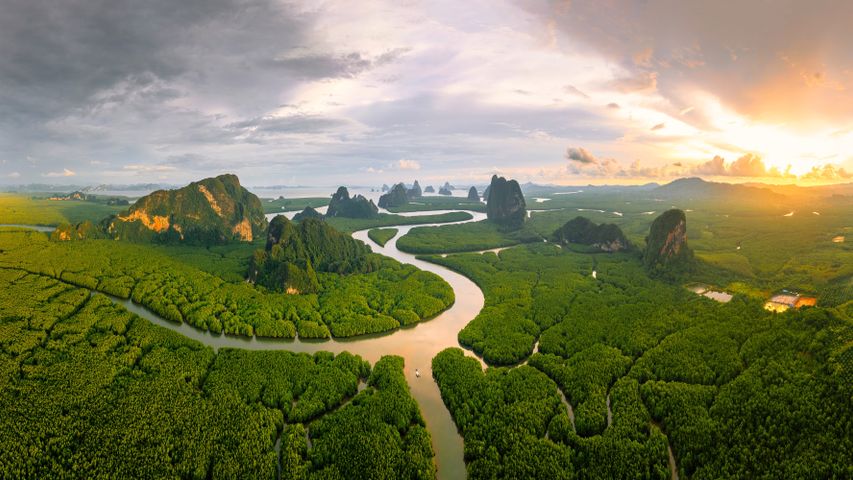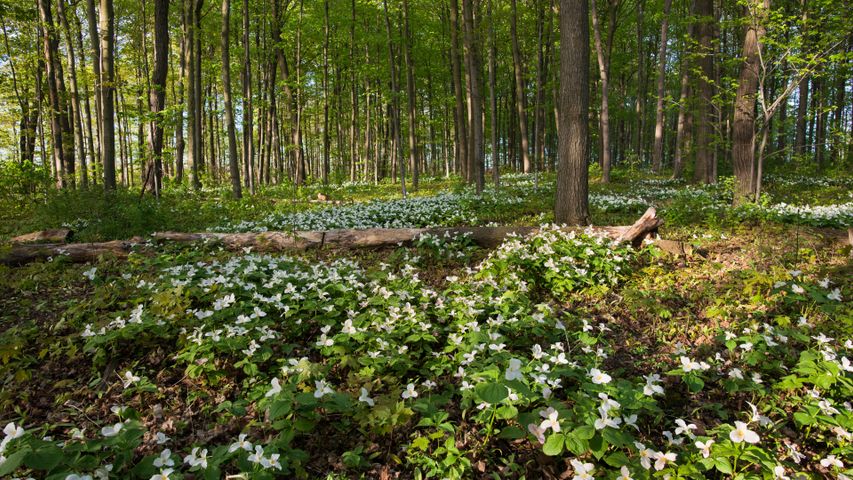Mangrove forest in Phang Nga Bay, Andaman Sea, Thailand
© Ratnakorn Piyasirisorost/Getty Image
In the tropics, land greets sea warmly. International Day of the Tropics
Only in the tropics do forests grow in salt water. Take this forest of mangrove trees in Phang Nga Bay in southern Thailand, one of the largest and best preserved mangrove forests in the country. Adapted to thrive in coastal marshes and swamps, mangroves can filter saltwater and withstand strong coastal storms. Virtually all mangrove forests and all species of mangrove grow only in the tropical regions of the world. They are protectors of the coastlines, acting as a buffer against storms and floods.
Today and on every June 29, we join the United Nations in marking the International Day of the Tropics, a moment to focus on the unique beauty of this region of the world and the challenges it faces. The tropics are roughly defined as the area above and below the equator between the Tropic of Cancer and the Tropic of Capricorn. By 2050, the U.N. estimates the tropics will be home to most of the humans on Earth, and two-thirds of the world’s children. It is also the poorest part of our world and the most vulnerable to global warming.
Phang Nga Bay on the Andaman Sea is one of the most treasured and visited sites in Thailand. The south-facing bay is about 388 square kilometres in size, and contains numerous limestone islets, tower karsts, cliffs, caves, and lagoons. At its mouth is the tourist mecca of Phuket island. Much of the bay is protected as the Ao Phang Nga National Park, created in 1981 by royal decree. The most famous landmark in the park is probably Ko Tapu, a tall cylindrical rock that is narrower at its base than at its top. It was featured in the 1974 James Bond movie ‘The Man with the Golden Gun,’ and has since been dubbed ‘James Bond Island.’ The real star of Phang Nga, however, is the mangrove. Resilient, wondrous, and beautiful, mangroves are an apt metaphor for the tropics they inhabit.
Related Images
Bing Today Images





 Butchart Gardens in Brentwood Bay, British Columbia
Butchart Gardens in Brentwood Bay, British Columbia
 British Columbia Parliament Buildings
British Columbia Parliament Buildings
 Cherry blossoms in Queen Elizabeth Park, Vancouver, Canada
Cherry blossoms in Queen Elizabeth Park, Vancouver, Canada
 Hobbit-hole in Hobbiton Movie Set, Waikato, New Zealand
Hobbit-hole in Hobbiton Movie Set, Waikato, New Zealand
 Tasmanian snow gum and pandani plants near Lake Dobson, Mount Field National Park, Tasmania, Australia
Tasmanian snow gum and pandani plants near Lake Dobson, Mount Field National Park, Tasmania, Australia
 White trillium blooming in Ontario, Canada
White trillium blooming in Ontario, Canada
 Cherry blossoms in Shanghai, China
Cherry blossoms in Shanghai, China
 A bowl full of cranberries, Ontario, Canada
A bowl full of cranberries, Ontario, Canada
